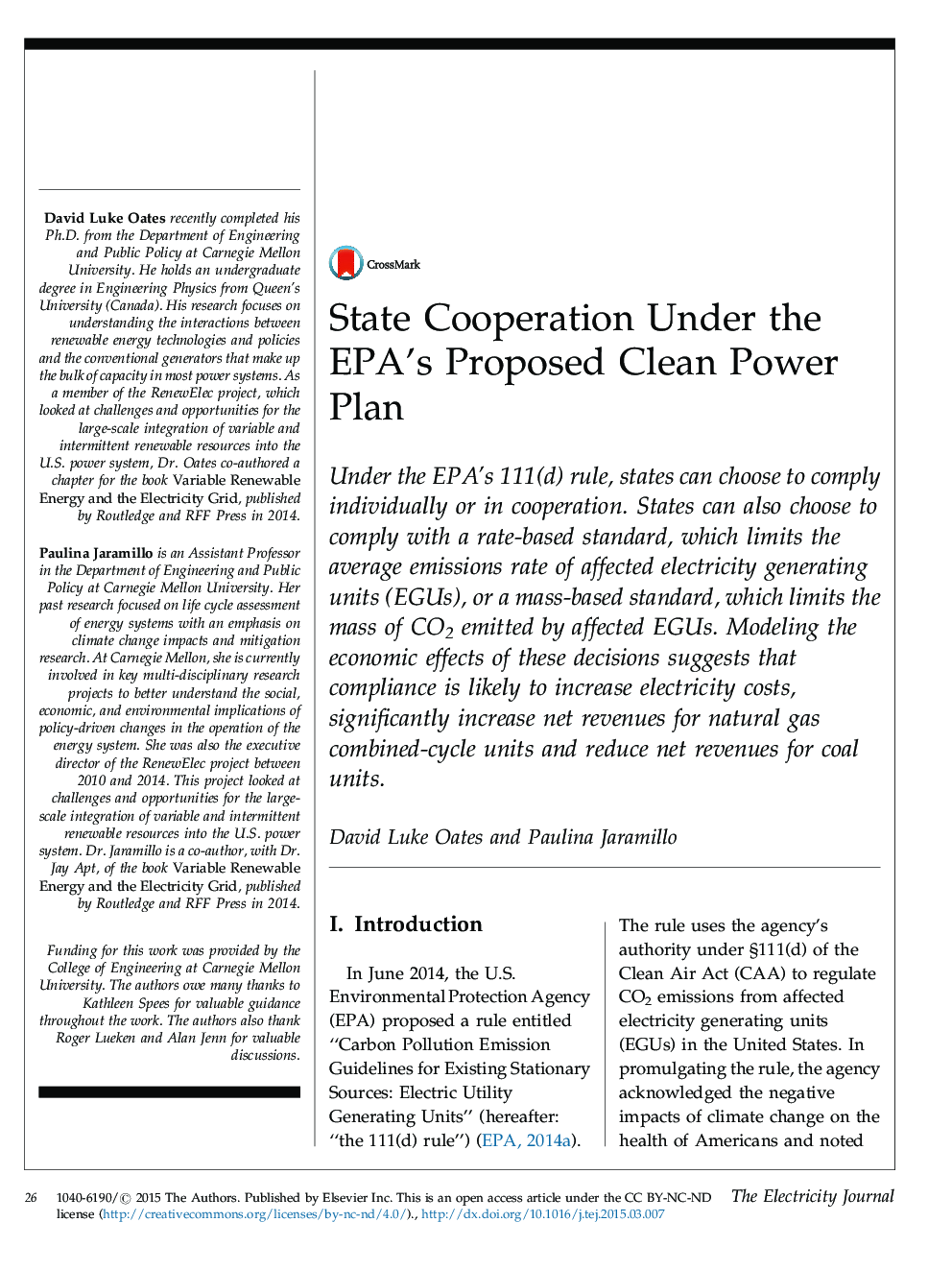| Article ID | Journal | Published Year | Pages | File Type |
|---|---|---|---|---|
| 10402303 | The Electricity Journal | 2015 | 15 Pages |
Abstract
Under the EPA's 111(d) rule, states can choose to comply individually or in cooperation. States can also choose to comply with a rate-based standard, which limits the average emissions rate of affected electricity generating units (EGUs), or a mass-based standard, which limits the mass of CO2 emitted by affected EGUs. Modeling the economic effects of these decisions suggests that compliance is likely to increase electricity costs, significantly increase net revenues for natural gas combined-cycle units and reduce net revenues for coal units.
Related Topics
Physical Sciences and Engineering
Energy
Energy Engineering and Power Technology
Authors
David Luke Oates, Paulina Jaramillo,
